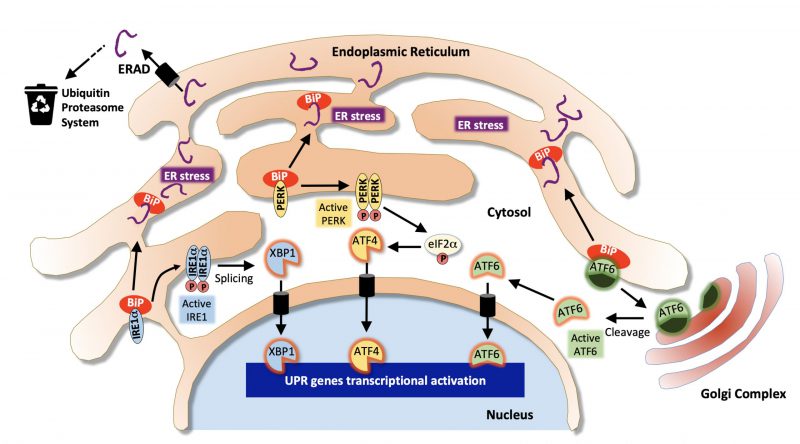Back to article: Endoplasmic reticulum and Golgi stress in microcephaly
FIGURE 1: Pathways associated with the Endoplasmic Reticulum stress response. Misfolded proteins are targeted to the ER-associated degradation machinery (ERAD) that sends them to the ubiquitin proteasome system for cytosolic degradation. Excessive accumulation of unfolded/misfolded proteins results in ER stress and dissociation of BiP from IRE1α, PERK and ATF6 leading to their activation and that of the unfolded protein response (UPR). The IRE1α/XBP1 pathway (in blue) leads to XBP1-dependent activation of chaperones and folding enzymes; The PERK/ATF4 pathway (in yellow) favors the activation of pro-apoptotic genes such as CHOP. Activation of eiF2α also contributes to translation inhibition. In the ATF6 pathway (in green), ATF6 is first transported to the Golgi where it is activated by proteolytic cleavage and translocates to the nucleus to activate the expression of XBP1 and other target genes involved in ERAD. (Adapted from 139]).
139. Frakes AE, and Dillin A (2017). The UPRER: Sensor and Coordinator of Organismal Homeostasis. Mol Cell 66(6): 761–771. 10.1016/j.molcel.2017.05.031

